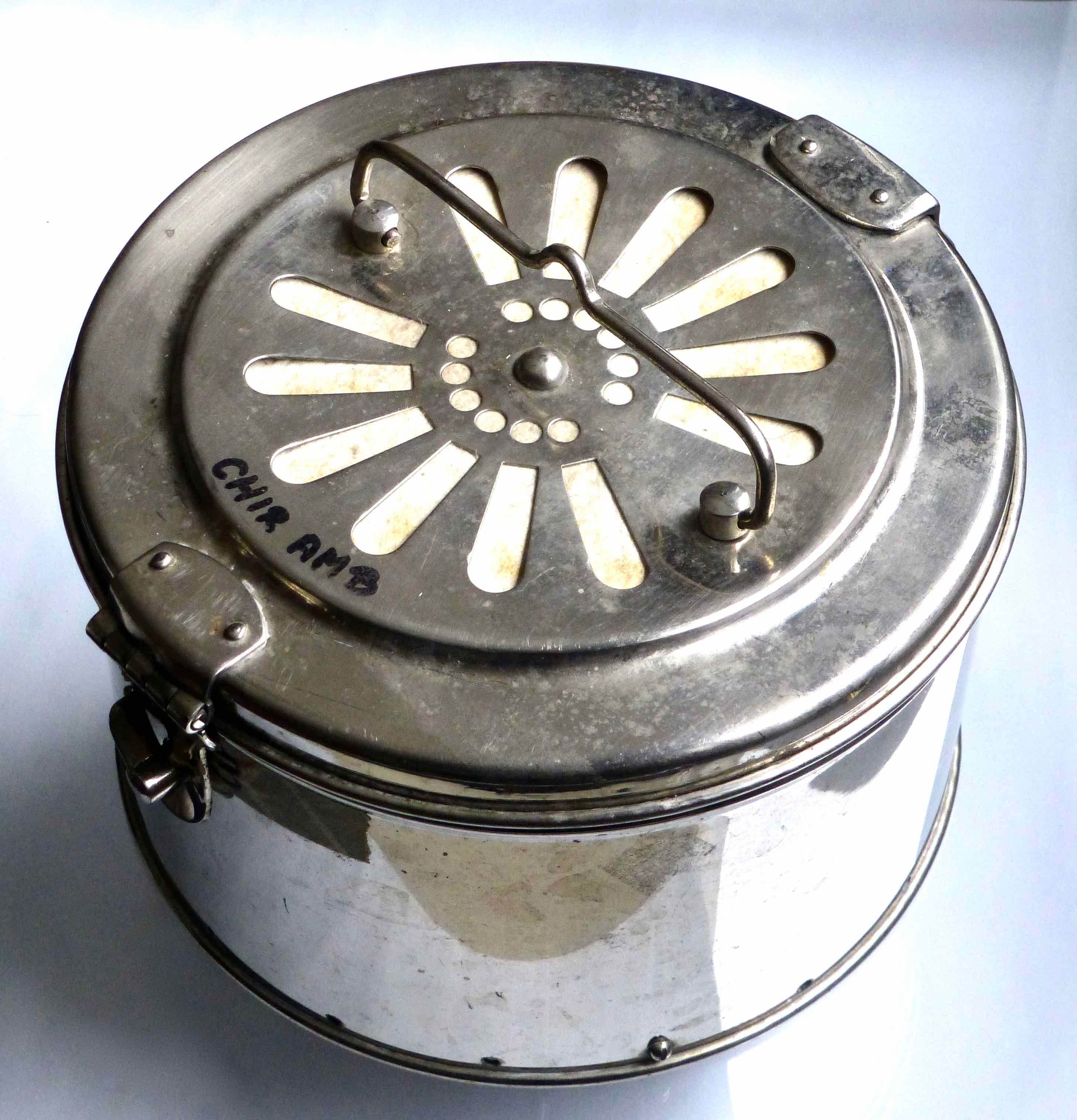Surgery |
||
Sterile container (2) by KONRICH |
||
In the second half of the 19th century, it came through the first disinfection of the suture, the English surgeon Joseph Lister (1827-1912) using carbolic acid (1867) and later the German surgeon Curt Schimmelbusch (1860-1895) with steam sterilization (1889 ), leading to a significant improvement in the surgical suturing technique - for the first time wound infections could now be prevented.
The containers developed by Schimmelbusch 1889 (inserts of the Schimmelbusch steam sterilizer) for instruments and surgical underwear are still called "mold bush drums" worldwide. From these containers, the containers and container systems used today have developed.
The contributions made by Schimmelbusch under Ernst von Bergmann in Berlin to the development and scientific justification of mechanical sterilization methods make the young Prussians world-famous. Its steam-sterilized containers and "mold bush drums" named after it are used for instruments, dressings and surgical underwear, and the principle of mold bush drums is still valid today, and continues to be the basis for the development of containers and container systems. The introduction of the autoclave for sterilization is considered to be a milestone in aseptic surgery .. For the use of sterilized products, Schimmelbusch gives concrete instructions: "the once so popular rinsing and washing out with sublimate or carbolic solutions should also be avoided as far as possible (surgical wounds) and to be replaced by a swab and swab with sterilized gauze ".
The presented round drum (diameter 20 cm, height 11 cm) comes from the outpatient department of the Innsbruck University Hospital, acquired 8/2016 at the "Old Port". A peculiarity of this drum is the fact that the openings coated with gauze can not be closed off, so sterility does not last long. In fact, it is NOT the classical drum n. Schimmelbusch, but a model according to KONRICH, which has a filter both in the bottom and in the lid.
The hygienist Friedrich KONRICH was born in Hooksiel (Oldenburg) in 1878, he was admitted to the Military Medical Academy in 1935, and from 1937 he was appointed head of the Institute for Hygiene and Infectious Diseases in Saarbrücken. From 1942 to 1945 he was President of the Reich Water Institute. and air quality in Berlin, field medical officer of the army medical inspection. He participated in "detoxification experiments" in the Neuengamme concentration camp. He died in 1945 in Berlin.
He wrote: Mrs. Konrich, The bacterial germ killing by heat; Disinfection and sterilization by heat. For use in hospitals and bacteriological laboratories, for physicians, pharmacists and health engineers, Ferdinand Enke publishing house, 1938. Review in: Umschau in science and technology issue 44, November 1940. Ms. Konrich, About the rehabilitation centers of the German POW camp, Health Engineer 64 (29) (1941) p. 399-404. Mrs. Konrich, introduction to the military hygiene, publishing house F. Enke, Stuttgart 1943.
Lit .: Curt Schimmelbusch: Instructions for aseptic wound treatment. Berlin 1892 (reprint Saarbrücken 2007). Marion Ruisinger, Prof. Dr., The steam sterilizer, in: Object stories, German Museum of Medical History, object January / February 2015. |




